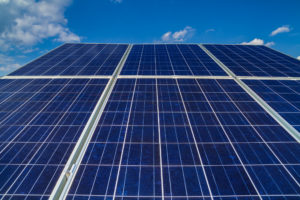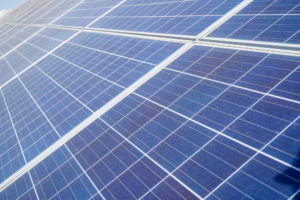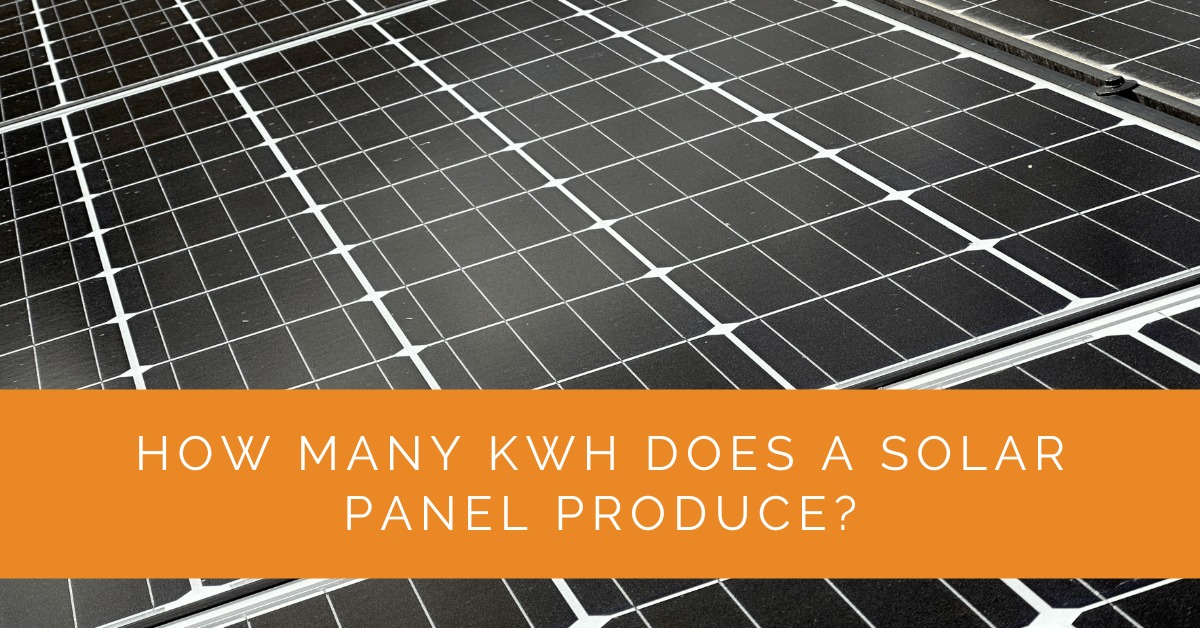With the increasing demand for renewable energy, solar panels have become popular for generating clean and sustainable power. Understanding the energy production capacity of solar panels is vital when considering a solar panel system for your home or business. In this article, we will explore how many kWh (kilowatt-hours) a solar panel can produce. By exploring the various factors that influence solar panel output, calculating energy production, and maximizing efficiency, you will gain valuable insights into harnessing the full potential of solar power.
Contents
- 1 Key Takeaways
- 2 Understanding Solar Panel Output
- 3 Calculating Solar Panel kWh Production
- 4 Average Solar Panel kWh Production
- 5 Maximizing Solar Panel kWh Output
- 6 Case Study: Maximizing kWh Output for a Residential Solar Panel System
- 7 Expert Insights From Our Solar Panel Installers About Solar Panel kWh Production
- 8 Experience Solar Excellence with Us!
- 9 Conclusion
- 10 FAQ
Key Takeaways
- The kWh production of a solar panel depends on factors such as sunlight intensity, panel efficiency, orientation, shading, and panel type, with monocrystalline panels typically producing between 1 to 2.4 kWh per day on average.
- Calculating kWh production involves considering variables like panel wattage, annual sunlight hours, and system efficiency using the formula: Energy (kWh) = Panel Wattage (kW) x Annual Sunlight Hours x System Efficiency.
- To maximize solar panel kWh output, optimize panel placement, perform regular maintenance, monitor system performance, and consider incorporating energy storage systems for increased self-consumption. These strategies help maximize energy production and efficiency while reducing reliance on the grid.
Understanding Solar Panel Output
Solar panel output refers to the energy generated by a solar panel system, measured in kilowatt-hours (kWh). It determines the quantity of electricity the system can produce. Several key factors influence the power output of a solar panel.
Sunlight Intensity and Duration
The intensity and duration of sunlight directly impact a solar panel’s energy production. Areas with abundant sunlight and longer sunny hours generally yield higher kWh outputs. Factors such as geographic location and local weather conditions play a vital role in determining the efficiency of solar panels.
Solar Panel Efficiency
Solar panel efficiency refers to how effectively a panel converts sunlight into electricity. Higher-efficiency panels can generate more power from the same amount of sunlight than lower-efficiency panels. Over the years, significant advancements in solar cell technology have led to increased efficiencies, enabling greater energy production.
Orientation and Tilt Angle
Solar panels’ orientation and tilt angle are crucial considerations for optimal energy capture. Ideally, panels should face south (in the Northern Hemisphere) or north (in the Southern Hemisphere) to maximize sunlight exposure. The tilt angle should also be adjusted based on the latitude of the installation site. By optimizing panel orientation and tilt, you can enhance the overall performance and power output of your solar panel system.
Shading and Obstructions
Shading and obstructions, such as trees or nearby buildings, can significantly impact solar panel output. Even partial shading can lead to a decrease in energy production. Assessing and minimizing shading is essential to ensure panels receive direct sunlight throughout the day. By keeping the surrounding area free from obstructions, you can maximize your solar panels’ efficiency and power output.

Calculating Solar Panel kWh Production
Several variables need to be considered to calculate the potential energy production of a solar panel. These include the panel wattage, annual sunlight hours, and system efficiency. The formula for calculating solar panel kWh production is as follows:
Energy (kWh) = Panel Wattage (kW) x Annual Sunlight Hours x System Efficiency
By plugging in the appropriate values, you can estimate the energy production of your solar panel system. This calculation lets you understand the expected kWh output and make informed decisions when designing your solar power setup.
Average Solar Panel kWh Production
The average kWh production of a solar panel can vary based on factors such as panel type and efficiency. Let’s explore the average production for different types of solar panels:
Monocrystalline Solar Panels
Monocrystalline panels are known for their high efficiency and excellent performance in converting sunlight into electricity. A monocrystalline solar panel can produce between 250 to 400 watts of power. This equates to an estimated daily output of approximately 1 to 2.4 kWh, depending on sunlight availability and system efficiency.
Polycrystalline Solar Panels
Polycrystalline panels are slightly less efficient than monocrystalline panels but are still widely used in residential solar installations. A polycrystalline solar panel can produce between 200 to 300 watts of power. This translates to an estimated daily output of around 0.8 to 1.8 kWh, depending on the specific conditions and efficiency of the system.
Thin-Film Solar Panels
Thin-film solar panels have lower efficiency than crystalline panels but offer other advantages, such as flexibility and lightweight design. A thin-film solar panel can produce between 100 to 250 watts of power. This results in an estimated daily output of approximately 0.3 to 1 kWh, depending on factors like sunlight intensity and system efficiency.
It’s important to note that these figures are averages and can vary depending on the specific panel manufacturer, quality, and other site-specific conditions. Consulting with reputable solar panel manufacturers or professional installers can provide more accurate information regarding the expected kWh production of different panel types.

Maximizing Solar Panel kWh Output
To maximize the kWh output of your solar panel system, consider implementing the following strategies:
- Optimize Placement: Ensure your solar panels are installed in an unobstructed location with maximum sunlight exposure. Avoid shading from trees, buildings, or other objects that can hinder the panel’s access to direct sunlight.
- Regular Maintenance: Keep your solar panels clean and free from dust, dirt, and debris. Regularly inspect and clean the surface to maintain optimal efficiency. This can be done using a soft cloth, mild detergent, and water.
- Monitor Performance: Keep track of your system’s performance to detect any issues or drops in output. Monitor key metrics such as daily kWh production and compare them to expected values. If you notice a significant decrease in output, consult a solar professional to identify and rectify the issue.
- Energy Storage: Consider incorporating battery storage systems into your solar panel setup. These batteries can store excess energy generated during the day when sunlight is limited or during power outages. By utilizing stored energy, you can further optimize self-consumption and reduce reliance on the grid.
By implementing these strategies, you can maximize your solar panel system’s energy production and efficiency, allowing you to harness the full potential of solar power and reduce your reliance on traditional energy sources.
Case Study: Maximizing kWh Output for a Residential Solar Panel System
Background
At Solar Panels Network USA, we strive to help homeowners harness the maximum potential of solar energy. This case study highlights our approach to optimizing the kWh production of a residential solar panel system, demonstrating our commitment to delivering efficient and sustainable energy solutions.
Project Overview
A homeowner approached us to install a solar panel system capable of significantly reducing their reliance on the grid and lowering their electricity bills. The primary objective was to achieve maximum energy production, ensuring that the system could meet the household’s energy needs efficiently.
Initial Consultation and Assessment
Energy Consumption Analysis
We began with a thorough analysis of the homeowner’s energy consumption patterns. By reviewing past utility bills and understanding the household’s daily energy usage, we gained valuable insights into their specific energy requirements.
Site Survey and System Design
A comprehensive site survey was conducted to assess the suitability of the roof for solar panel installation. Factors such as roof orientation, tilt angle, shading from nearby trees and buildings, and available roof space were carefully evaluated. Using advanced design software, we developed a customized solar panel system optimized for the site’s unique conditions.
Implementation
Choosing High-Efficiency Panels
Based on the assessment, we recommended high-efficiency monocrystalline solar panels known for their superior performance in converting sunlight into electricity. These panels were selected to ensure maximum energy production, even in varying sunlight conditions.
Optimizing Panel Placement
We strategically positioned the solar panels to maximize sunlight exposure throughout the day. The panels were installed at the optimal tilt angle and orientation, considering the geographic location and specific site characteristics. This approach minimized shading and ensured consistent energy production.
Incorporating Advanced Monitoring Systems
To track the system’s performance and identify potential issues promptly, we integrated advanced monitoring systems. These systems provided real-time data on energy production, allowing the homeowner to monitor the system’s efficiency and output closely.
Results
Significant Increase in kWh Production
Post-installation, the solar panel system demonstrated a substantial increase in kWh production. The high-efficiency panels, combined with optimal placement and advanced monitoring, resulted in an average daily output that exceeded initial estimates. The system consistently generated enough electricity to cover the household’s energy needs and feed excess power back into the grid.
Financial Savings and ROI
The homeowner experienced significant financial savings, with a notable reduction in monthly electricity bills. The efficient system design and high energy production shortened the payback period, resulting in an impressive return on investment. The homeowner was delighted with the financial benefits and the contribution to a sustainable future.
Enhanced Energy Independence
With the solar panel system in place, the homeowner achieved greater energy independence. The ability to generate and use clean, renewable energy reduced reliance on the grid, providing a sense of security and resilience during power outages.
Summary
Our expertise in solar energy solutions enabled us to design and implement a highly efficient solar panel system for the homeowner. By conducting a detailed energy assessment, selecting high-efficiency panels, optimizing panel placement, and integrating advanced monitoring systems, we maximized the kWh output of the system. This case study underscores the importance of meticulous planning, expert guidance, and strategic implementation in achieving optimal energy production and financial savings.
Expert Insights From Our Solar Panel Installers About Solar Panel kWh Production
The key to maximizing solar panel output lies in understanding the interplay of sunlight intensity, panel efficiency, and proper installation. Optimizing these factors can significantly boost your energy production.
Lead Solar Engineer
Regular maintenance, such as keeping the panels clean and free from debris, can make a notable difference in the efficiency and kWh output of your solar panel system. Consistent care ensures peak performance.
Senior Solar Technician
Integrating energy storage solutions with your solar panels can greatly enhance self-consumption and overall system efficiency. This approach not only maximizes energy usage but also offers greater independence from the grid.
Renewable Energy Specialist
Experience Solar Excellence with Us!
Trust in Solar Panels Network USA, where our seasoned experts deliver top-quality solar solutions for homes and businesses nationwide. With a legacy of countless successful installations and a commitment to sustainable energy, we’re your reliable partner in the solar journey. Ready for a brighter, eco-friendly future? Call us now at (855) 427-0058 and harness the power of the sun!
Conclusion
Understanding how many kWh a solar panel can produce is essential when considering installing a solar panel system. Factors such as sunlight intensity, solar panel efficiency, orientation, shading, and panel type contribute to energy production. By carefully considering these factors and utilizing efficient solar panels, you can generate significant electricity to power your home or business with clean and sustainable energy.
Solar energy offers numerous benefits, including reduced electricity bills, environmental sustainability, and energy independence. By harnessing the sun’s power, you contribute to a greener future and help combat climate change.
Embrace the potential of solar energy and consult with reputable solar panel manufacturers and installers to design a system that meets your energy needs while maximizing kWh production. Start your journey towards a cleaner and more sustainable future with solar power today.
FAQ
How many solar panels do I need for 1000 kWh per month?
The number of solar panels needed to generate 1000 kWh per month depends on panel wattage, sunlight availability, and system efficiency. On average, a rough estimate would be around 20 to 30 solar panels, considering an average panel output of 250-400 watts per panel.
How many solar panels does it take to make 1 kWh?
The number of solar panels required to generate 1 kWh depends on the wattage of the panels and the amount of sunlight available. Assuming an average panel wattage of 300 watts, one panel would be sufficient to produce 1 kWh under ideal conditions and maximum sunlight exposure.
Can solar panels produce 30 kWh per day?
The energy production of solar panels depends on various factors, including panel efficiency, sunlight intensity, and duration. While it is possible for solar panels to produce 30 kWh per day, it would typically require a larger system with high-efficiency panels and optimal sunlight conditions.
How many solar panels do I need for 3000 kWh per month?
The number of solar panels required to generate 3000 kWh per month would depend on factors such as panel wattage, sunlight availability, and system efficiency. As a rough estimate, you may need around 60 to 90 solar panels, considering an average panel output of 250-400 watts per panel.
It’s important to note that these numbers are approximate and can vary based on specific factors such as geographic location, panel efficiency, shading, and system design. Consulting with a reputable solar installer can provide a more accurate assessment of your energy needs and the number of panels required to meet them.
About the Author
Solar Panels Network USA stands at the forefront of solar energy solutions, driven by a team of seasoned solar engineers and energy consultants. With over decades of experience in delivering high-quality solar installations and maintenance, we are committed to promoting sustainable energy through customer-centric, tailored solutions. Our articles reflect this commitment, crafted collaboratively by experts to provide accurate, up-to-date insights into solar technology, ensuring our readers are well-informed and empowered in their solar energy decisions.

